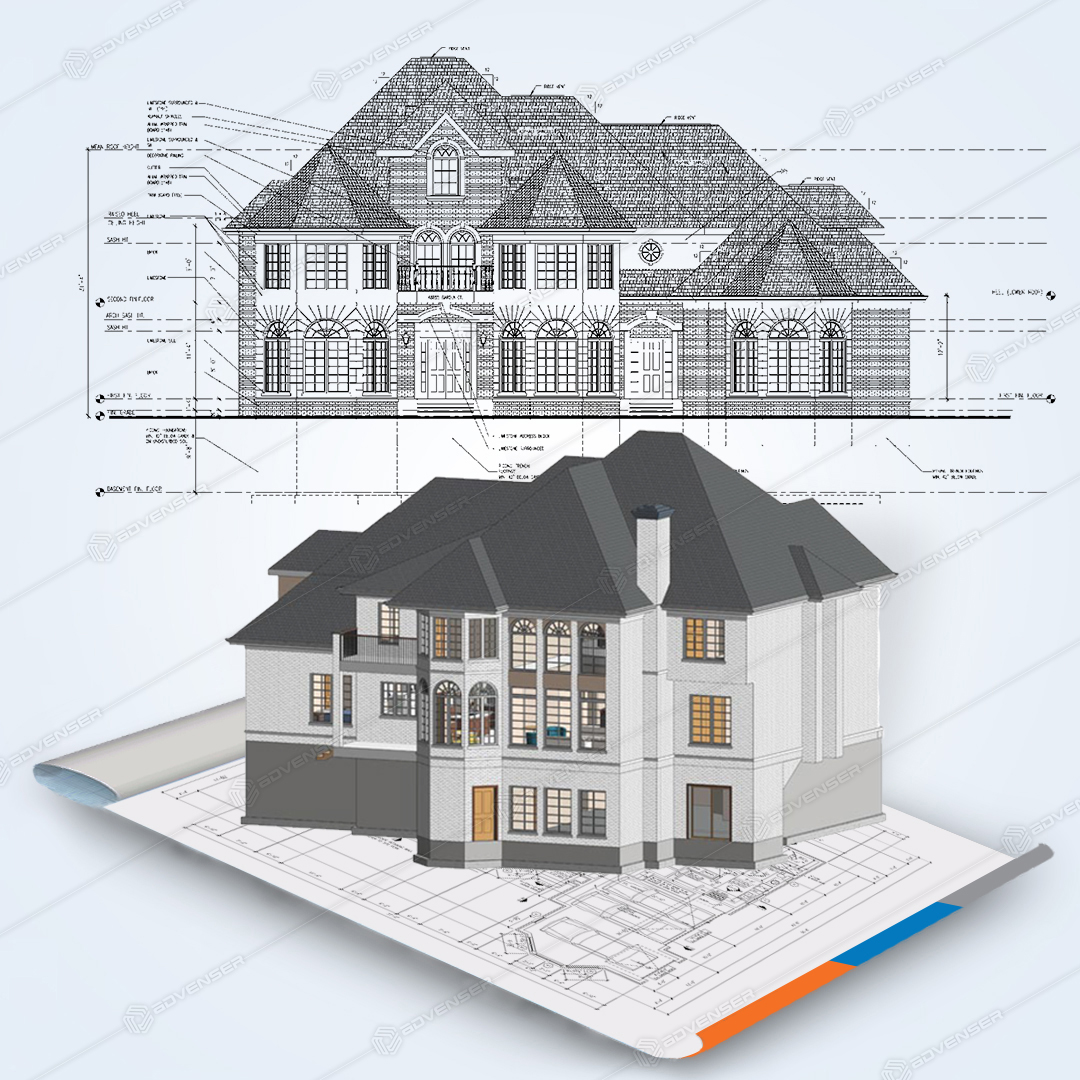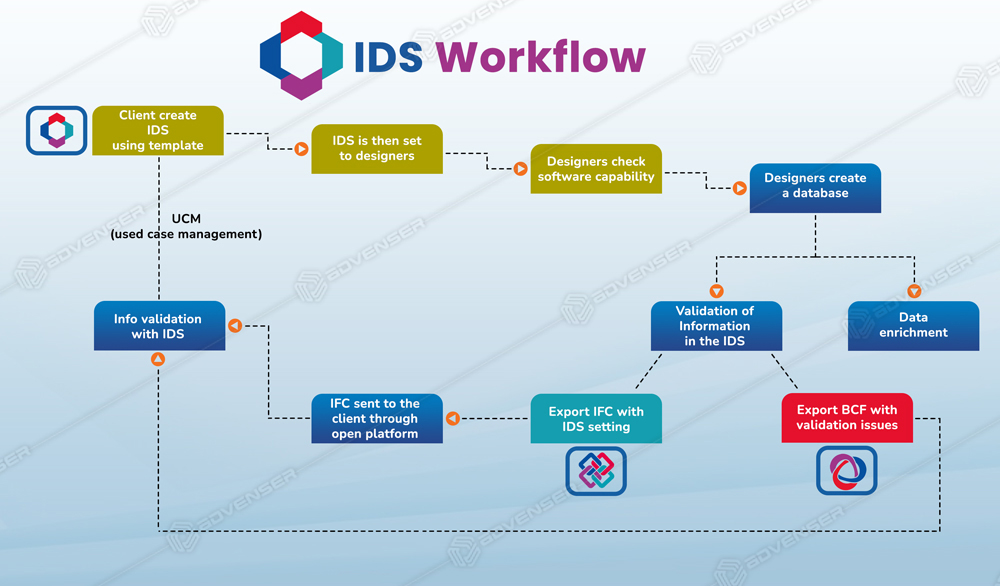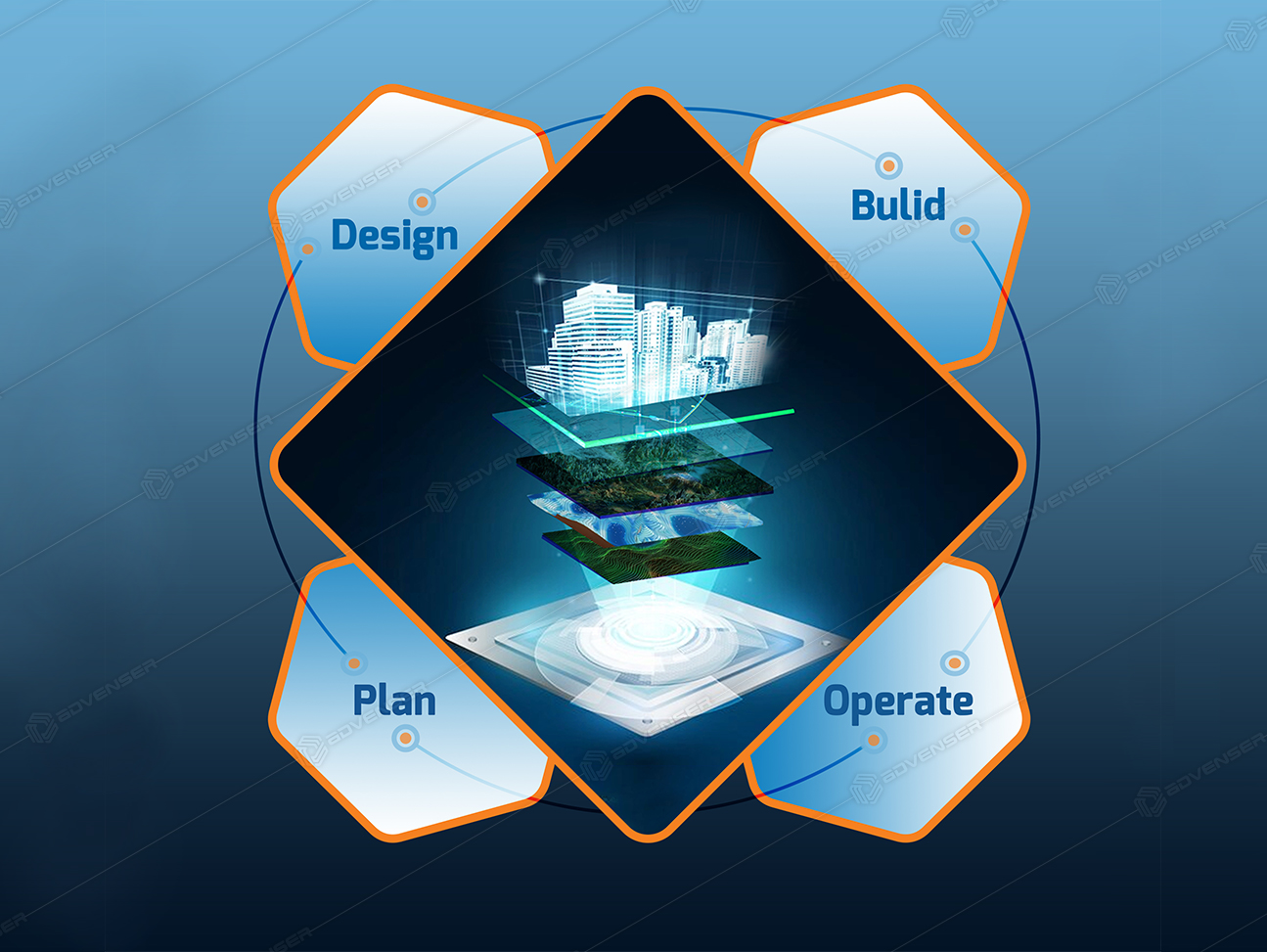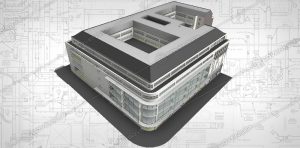In the architecture, engineering, and construction (AEC) industry, Building Information Modeling (BIM) has emerged as a game-changing technology that transforms the way professionals design, construct, and manage buildings. BIM have become progressively more important in the architecture, engineering, and construction industries.
This comprehensive approach involves intelligent modeling or prototyping a virtual building model containing detailed information about its physical and functional characteristics. By leveraging BIM, professionals can elevate project outcomes, enhance collaboration, and make well-versed decisions throughout the entire building lifecycle.
This blog post will provide a beginner-friendly introduction to BIM, exploring, benefits, software considerations, and a step-by-step guide to getting started with BIM/implementing BIM.

Understanding BIM: A Brief Overview
BIM is the digital technology that has completely reformed the AECO industries. BIM has transformed into a very revolutionary tool that has significantly changed the way professionals approach designing, building, and managing buildings. BIM exceeds traditional software applications; it is a collaborative process that involves the creation of a virtual model of a building with the most accurate details. This digital model serves as a host of information, providing stakeholders with a complete picture of the building’s lifecycle from the design through to the operation and maintenance.
Using BIM technology, the interested parties can have access to accurate and updated records on the structure to make good decisions. This allows them to identify any problems early on, improve the design and construction processes, and also avoid high-priced rework. In addition, BIM promotes and supports efficient collaboration and communication between architects, engineers, contractors, and facility managers, enabling them to operate as one cohesive team with a single goal in mind. By offering a single channel for the exchange of information, BIM successfully eliminates the silos and barriers and fosters a cohesive environment in which knowledge and insights can be easily combined.
Additionally, the BIM holds a great potential for cost minimization and productivity enhancement in the projects. With the aid of virtual simulations and clash detection, BIM enables the identification and resolution of the clashes between the various building systems prior to the actual on-site construction. This proactive approach reduces the amount of costly rework required during the construction, eliminating both time and resource loss. Moreover, BIM also enables the precise estimation of material quantities, which enhances the procurement process and minimizes the material wastage.
Benefits of BIM
Building Information Modeling (BIM) offers a plethora of benefits that notably enhance project deliverables.
Virtual representation/model of the building
Enables stakeholders to visualize the project more comprehensively. This shared environment nurtures seamless collaboration and communication among architects, engineers, contractors, owners, and facility managers, ensuring that everyone is aligned toward achieving the project’s objectives.
Minimizing errors and omissions during design and construction.
By simulating and analysing the building virtually, clashes between different building systems are identified and resolved, eliminating the need for costly reworks.
Improving project visualization and coordination
It generates detailed 3D models that represent the building, helping stakeholders understand spatial relationships and interdependencies. This leads to effective coordination and informed decision-making, reducing the risk of errors and omissions.
BIM also contributes to improved project efficiency and productivity.
By providing accurate and up-to-date information about the building, BIM empowers stakeholders to make well-informed decisions throughout the project lifecycle. This streamlined decision-making process reduces delays and rework, resulting in enhanced project efficiency and productivity
BIM ensures comprehensive project documentation and handover.
The digital models and information generated during the BIM process serve as an invaluable resource for facility management and maintenance. This meticulous documentation ensures that all relevant information about the building is readily available, facilitating efficient operation and maintenance throughout the building’s lifecycle.
In conclusion, BIM offers a transformative approach to construction projects, providing numerous advantages that enhance project outcomes. From improved collaboration and reduced errors to increased efficiency and better documentation, BIM empowers stakeholders to achieve exceptional results and deliver high-quality projects meeting the needs of the modernistic construction industry.
Getting started with BIM: a step-by-step guide:
Implementing BIM requires careful planning and preparation. Here’s a step-by-step guide to help you embark the BIM journey:
Kick-off with basics:
Before diving into the implementation process, it’s crucial to grasp the fundamental concepts of BIM. You may start by searching online content for BIM, BIM success stories, understanding BIM concept, benefits, and workflows applicable through the project lifecycle.
Explore BIM software and tools:
Explore the various BIM software available in the market, understand their capabilities, and choose the one that aligns with your project requirements and budget. You need to take into consideration the size and complexity of your projects, evaluate the features and capabilities of different software options, and compare the software costs. Take your time and make this as it is a critical decision that can significantly impact the success of your BIM implementation.
Identify and define your goals and objectives:
To embark on a successful BIM implementation journey, it’s essential to identify and define your organization’s goals and objectives. Determine why you want to actually implement BIM and what are the specific outcomes you wish to achieve. It may be reducing errors and rework, improving project communication, enhancing project delivery, or bidding on more projects. Clearly defining your goals and purpose will steer your implementation strategy and help measure success.
Create a BIM Execution Plan (BEP):
A BEP outlines the specific processes, roles, and responsibilities for BIM implementation on a particular project. It should include all key information such as the project objectives, the scope of BIM use, the software and hardware requirements, roles and responsibilities of members, training plan/schedule for project team members, file-naming conventions, and project milestones.
Build and set up a BIM Team:
Identify and assemble a team of professionals who will be liable for managing and implementing BIM or hiring a BIM services provider. This team may include BIM managers, coordinators, modelers, etc. At the same time, assess your organization’s readiness for this implementation program and address the gaps before BIM implementation kicks off.
Invest in the apt BIM software:
Finalize the appropriate BIM software from shortlisted options that meets your project requirements. Investing in the right tools will enable your team to effectively collaborate, visualize designs, and streamline project workflows to achieve optimal results.
Train project team members:
Providing training to your team members on BIM software and best practices is crucial for successful adoption. Provide comprehensive training programs to familiarize your team with BIM concepts, software usage, and best practices. This will ensure that everyone involved has the basic and required skills to work effectively within the BIM environment. Foster continuous learning and support to address queries arising during the implementation process.
Develop BIM standards and templates and set up a Common Data Environment (CDE):
Create a set of standards and templates that will guide your team in creating consistent and uniform BIM models. This includes defining modeling standards, naming conventions, and file organization structures. A CDE serves as a central hub where all project-related documents and data are stored. It offers a safe and regulated space for project team members to retrieve and exchange information, guaranteeing that everyone is utilizing the most up-to-date and precise project data.
Start with pilot project:
Begin implementing BIM on smaller, less complicated projects to test and upgrade your BIM processes. This will help you identify any challenges or areas for improvement before scaling up to larger projects
Recognize BIM activists:
Identify team members who possess a strong passion for BIM and can serve as activists for this technology. These champions can a crucial role in promoting its adoption and providing assistance to other team members throughout and post the implementation and training process.
Constantly improve and adapt:
BIM implementation is an enduring process. It is important to consistently review and evaluate your processes, workflows, standards, and protocols to optimize your BIM capabilities and upgrade whenever required. Gather feedback from team members making necessary adjustments to further improve efficiency and tackle the challenges arising therein.
Stay informed and updated:
Stay abreast with the latest developments in BIM technology. Register for the conferences, webinars, training sessions and attend them to stay well versed about best practices and industry standards.
Conclusion
In conclusion, BIM revolutionizes construction projects with its numerous benefits. By embracing BIM, construction professionals can harness the power of technology to deliver top-notch quality, profitable, and sustainable built environments. The future of construction lies in BIM, and those who embrace it will lead to innovation and success. Implementing BIM is a journey that requires perseverance, commitment, investment, and continuous learning. By following this step-by-step guide, you’ll be well-equipped to get started with BIM and unlock its full potential. Embrace BIM and venture on a transformative journey towards efficient and sustainable construction practices.





